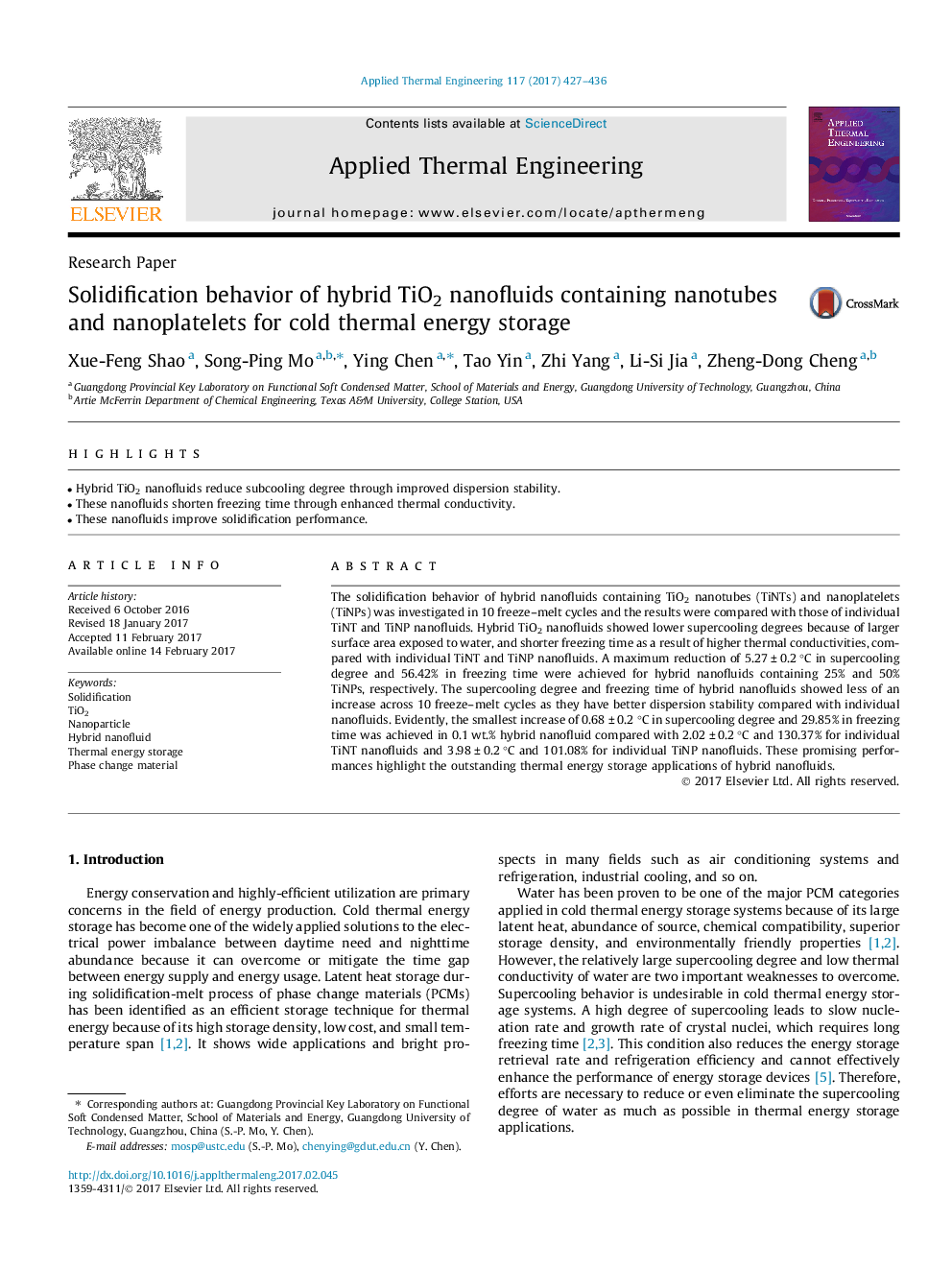| Article ID | Journal | Published Year | Pages | File Type |
|---|---|---|---|---|
| 4991533 | Applied Thermal Engineering | 2017 | 10 Pages |
Abstract
The solidification behavior of hybrid nanofluids containing TiO2 nanotubes (TiNTs) and nanoplatelets (TiNPs) was investigated in 10 freeze-melt cycles and the results were compared with those of individual TiNT and TiNP nanofluids. Hybrid TiO2 nanofluids showed lower supercooling degrees because of larger surface area exposed to water, and shorter freezing time as a result of higher thermal conductivities, compared with individual TiNT and TiNP nanofluids. A maximum reduction of 5.27 ± 0.2 °C in supercooling degree and 56.42% in freezing time were achieved for hybrid nanofluids containing 25% and 50% TiNPs, respectively. The supercooling degree and freezing time of hybrid nanofluids showed less of an increase across 10 freeze-melt cycles as they have better dispersion stability compared with individual nanofluids. Evidently, the smallest increase of 0.68 ± 0.2 °C in supercooling degree and 29.85% in freezing time was achieved in 0.1 wt.% hybrid nanofluid compared with 2.02 ± 0.2 °C and 130.37% for individual TiNT nanofluids and 3.98 ± 0.2 °C and 101.08% for individual TiNP nanofluids. These promising performances highlight the outstanding thermal energy storage applications of hybrid nanofluids.
Related Topics
Physical Sciences and Engineering
Chemical Engineering
Fluid Flow and Transfer Processes
Authors
Xue-Feng Shao, Song-Ping Mo, Ying Chen, Tao Yin, Zhi Yang, Li-Si Jia, Zheng-Dong Cheng,
